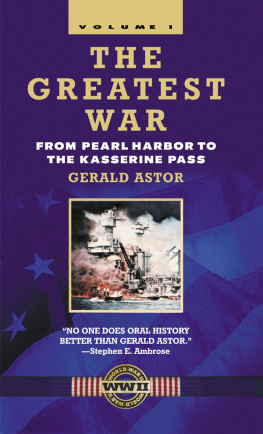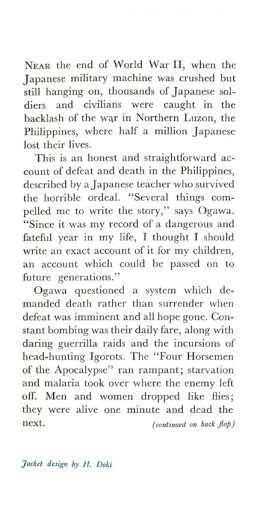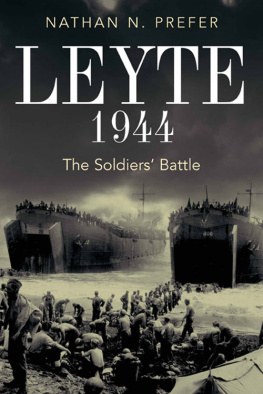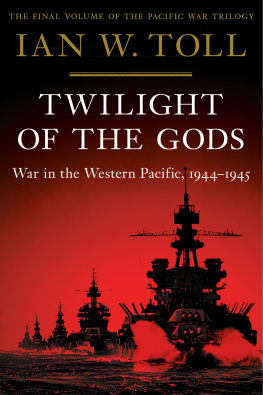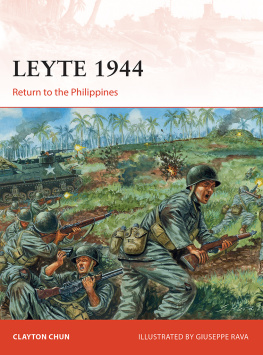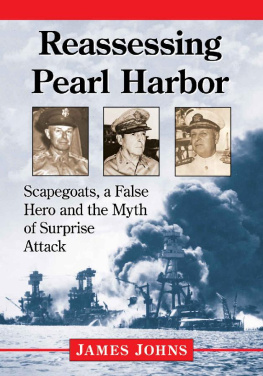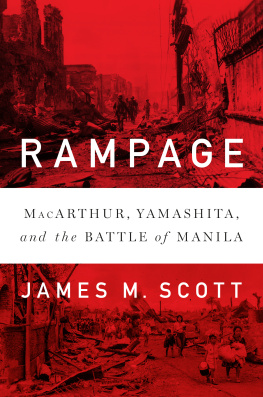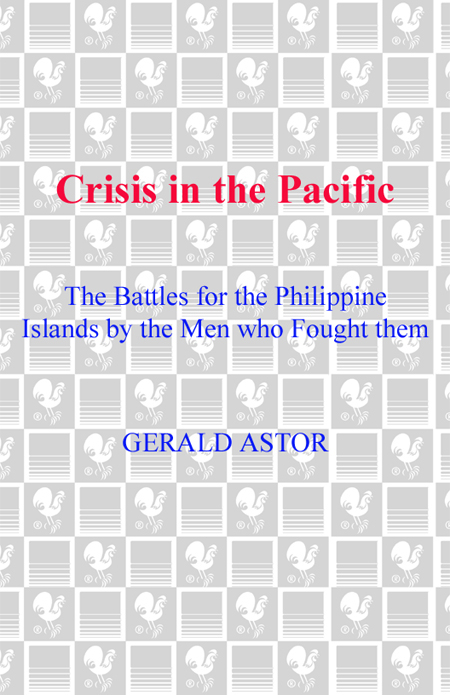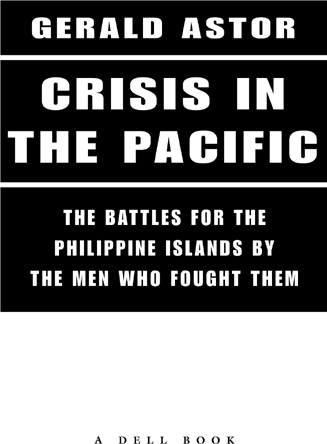WORLD WAR II LIBRARY
For the hundreds of thousands of readers fascinated by World War II history, Dell has created the World War II Libraryoutstanding nonfiction narratives that convey the total experience of war with historical accuracy and detailed immediacy that until now could be understood only by those who had fought it.
PRAISE FOR GERALD ASTOR'S
BATTLING BUZZARDS
ABSORBING, INFORMATIVE TELLINGLY DETAILED.
Kirkus Reviews
Superior as an example of oral history.
Booklist
QUICK AND WELL-PACED, this will please even the most jaded of readers.
Army Magazine
THE MIGHTY EIGHTH
No one does oral history better than Gerald Astor. Here the men of the mightiest air force ever built tell their story in their own wordsof trials, tribulations, triumphs, terror, and tedium.
Stephen Ambrose
FASCINATING invaluable in terms of understanding both the process of protracted war and its effect on the human spirit. Excellent in weaving these stories into a broader analysis of the Eighth's role in the air war with Germany, Astor demonstrates once again that he's one of the most accomplished oral historians at work today.
Publishers Weekly
Revealing and vivid His many interviews of American airmen turn up some fascinating anecdotes, catching the grim realities of air combat in a way that more conventional histories cannot.
Kirkus Reviews
Please turn the page for more extraordinary acclaim.
A BLOOD-DIMMED TIDE
ORIGINAL EVOCATIVE BRILLIANT
Publishers Weekly
Consistently gripping a vivid vision of warfare from the foxhole.
Daily Press (Newport News, Va.)
A GRIPPING STORY will no doubt take its place as a classic.
The Record (Troy, NY)
The immediacy and clarity of enlisted men's accounts form the core reality here, giving a palpable sense of infantry and tank warfare. Strong narrative, sound history, and a good read.
Kirkus Reviews
AN ABSORBING BOOK, fascinating for its first-person detail.
Richmond Times-Dispatch
A compelling, effective contribution to World War II history.
Booklist
OPERATION ICEBERG
THIS IS ORAL HISTORY AT ITS FINEST.
The Washington Post Book World
There probably will never be a book that does a better job of capturing the experience of the people who were there.
The Flint Journal
UNFORGETTABLE.
Gannett Suburban Newspapers
A FINE WORK both historically accurate and compelling.
Newport News Daily
A MOVING COLLECTION a fitting tribute to all those who served so honorably.
Kirkus Reviews
I
II
III
IV
V
VI
VII
VIII
IX
X
XI
XII
XIII
XIV
XV
XVI
XVII
XVIII
XIX
XX
XXI
XXII
XXIII
XXIV
XXV
XXVI
XXVII
FIRST AND FOREMOST I thank the many people listed under Roll Call for their generosity in sharing with me their memories and their private papers and for their patience in answering my questions.
I am also indebted to a number of institutions that are repositories for documents and publications that were vital in my research. In this connection, I am grateful to Dr. Richard J. Sommers and the U.S. Military History Institute, Carlisle Barracks, Pennsylvania; Maj. Connie Moore and the U.S. Army Center for Military History, Washington, D.C.; the U.S. Naval Historical Center, Washington, D.C.; Paul Stillwell and the U.S. Naval Institute at Annapolis, Maryland; Alan Aimone and the U.S. Military Academy Library at West Point; Dr. Walton S. Moody, historian of the U.S. Air Force; Dr. Benis M. Frank and the U.S. Marine Corps Historical Center, Washington, D.C.
Other individuals who contributed to this book include: Mark Hunter of the 44th Tank Battalion Association; Col. John Olson (USA Ret.), who not only provided a wealth of information in his books but also provided leads for additional sources; Dr. Bob Muehrcke, who was not in the Philippines but knew some from his Americal Division who were; Ed Hudson with the USS Cabot Association; Capt. Charles Smith (USN Ret.), Executive Director of the American Society of Naval Engineers; Frank Schultz, Secretary of the 32nd Division Veterans Association; Dr. Har-gis Westerfield, an authority on military history; Sinclair Browning, who was kind enough to share with me factual research on the period that is the basis of her novel America's Best; and Russ Catardi for furnishing leads.
AT THE TIME of the fiftieth anniversary of the invasion of Normandy on June 6, 1944, the outpouring of books on the subject occasioned an essay by Samuel Hynes, a Navy pilot during World War II and a professor of English at Princeton. He had written his own memoir, and he remarked that personal narratives of war generally aren't about emotions: they have to do with physical particulars, equipment, terrain and weather, sights, sounds and smells, the punishment the body takes from wounds, illness, hunger, heat, cold. Hynes indicated that if the authors intended to provide a feeling of how it was, then they would seem to have failed.
Having immersed myself in such individual accountsthis is my fifth book that tells of WWII through the words and memories of those who participatedI can vouch for the accuracy of Hynes's reading but not necessarily his conclusion. The details, the sights, sounds, smells, the physical sensations described by those involved do have a capacity to evoke in a reader at least a semblance of the feeling of how it must have been, a shudder of horror, a flush of exaltation, a mournful shiver. In some instances, the author does speak of emotions. But in my experience, words that focus on feelings create no more of an emotional response than descriptions of what happened. Frequently, the effort to recall sensations becomes an intellectual exercise, like attempts to capture in language the feelings generated by a piece of music or a painting.
The most common literary weakness of individual memoirs lies in an inability to separate out the details that have only a personal significance from matters that resonate with readers. This is the nature of the beast, war. An individual soldier, even a MacArthur, however heroic or brilliant, doesn't determine the course of modern war any more than a single person builds a cathedral. War is a group enterprise. The campaigns in the Philippines consisted of millions of acts by hundreds of thousands of people. A solitary human was submerged in the multitudes and buried under the weight of machines and technology. The man with the gun, even an artillery piece, was but a tiny spark in a long night rent by thunderous lightning. Although desperately concerned with preservation of the small self, a combatant's potential to build his story to a peak is destroyed by the absence of a crowning event. And for even the massive armies there was no last battle. The climax of WWII lay in the explosions of the A-bombs, but for the troops, the fighting just petered out. There was no decisive battle marked by some heroic act and that is certainly true of both the defense and liberation of the Philippines.


